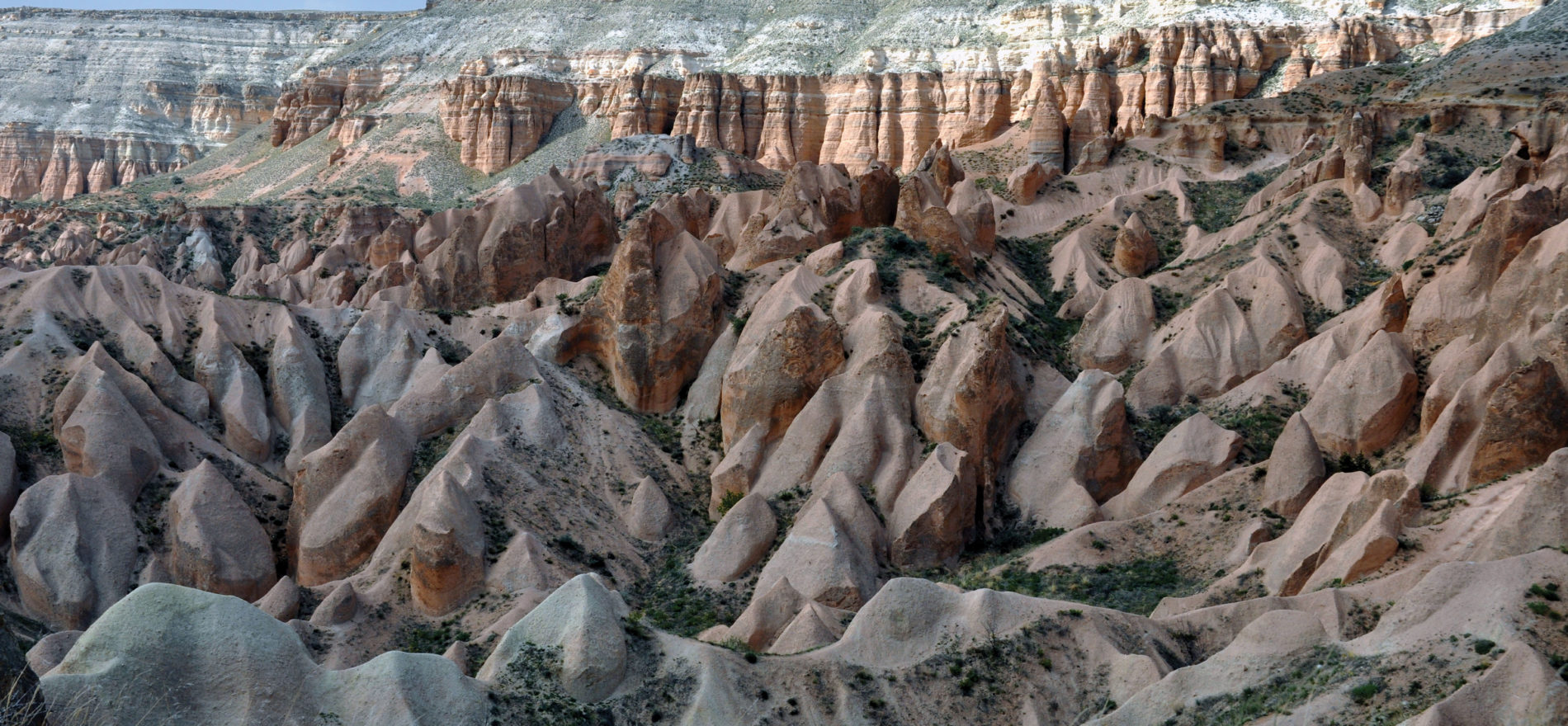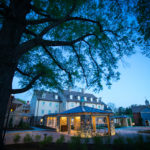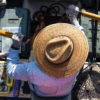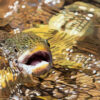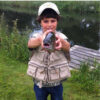In mid-spring, this single American woman explored western Turkey.
Cover photo by Emily. M. Grey
I never felt unsafe or unduly concerned for my well-being. As a medium-toned brunette, I had hoped to blend in. This was not the case, and it did not matter. Wherever I traveled, people smiled, welcomed me, engaged in pleasant conversation and regularly shot the peace sign. An ever-present joy filled my heart as I discovered a timeless culture. Though the vicinities of Pamukkale and Istanbul were wonderful, I savored the best for last.
Nothing totally prepares the adventurer for Anatolia, Turkey’s central Heartland. Neither China’s mystical floating mountains in Zhangjiajie, where part of Avatar was filmed, nor Arizona’s haunting Monument Valley can hold a torch over a mesmerizing region known as Cappadocia. Some of the world’s oldest known human civilizations were established here. Today, breathtaking geological formations are the draw.
Surreal, pinkish-tinged pillars, cones, and cliffs frame the rugged landscape. Over ten million years ago, three volcanoes erupted spewing lava, ash, and mud over the land. Eons later, these explosive products cooled and compressed forming a soft porous rock called tufa. In time, water sculpted beautiful valleys. Wind and erosion chiseled one of nature’s grandest formations. Oxidation added color.
“Cappadocia means land of horses,” says Emrah, my guide. “No one really knows why it is so named. Horses are not numerous here. The area is known for potatoes and grapes, used to make wine. Apricots and figs are grown later.”
Many visitors rise before dawn to view this heavenly rockbound world from hot air balloons. Having partaken of this activity outside Albuquerque, New Mexico, I elected to keep my feet firmly planted on the earth. There were abundant rarities to see, touch, and photograph close-up, below ground, and atop pinnacles.
“Wow!” I exclaim with childlike astonishment. Goreme Open-Air Museum, a UNESCO World Heritage Site, is shaped with strange towering crags and eleven side-by-side rock-cut churches. Centuries ago, artists painted vibrant frescoes depicting the Old and New Testament on the walls of these sacred caves. My companion and I scramble up steps to examine the interior of these monastic-like structures and feast our eyes on the all-encompassing sights below. Albeit a Muslim nation, Turkey is called the “Cradle of Christianity.”
We board our private taxi and ride to nearby Avanos and hike up pebbly trails for a panoramic glimpse of the stone village. Residents weave carpets and craft pottery much like their Neolithic ancestors. A local potter invites me to give it a go at the wheel. I could not resist purchasing an intricately designed gold and black wine holder.
We stop for lunch at Seyyah Han Restaurant and Café. Our waiter gently taps an earthen pot. Lid removed, we relish a tasty chicken stew over saffron rice. Turkish cuisine is fabulous and healthy—plenty of fresh vegetables, fruits, and grains. Acik cay tea (a weakened version) compliments most meals. Another day we dine on Grandma’s hearty beef and red lentil soup at Bizem Ev Restaurant and Café.
Emrah and I hunch over through a maze of tunnels in an ancient underground city called Kaymakli Cave. Crude ladders lead to individual chambers with cooking and bedding areas for humans and their animals. Thousands of early Christians hid from their enemies for months in this elaborate network of constricted windowless passageways. Entries were surreptitiously concealed. No one knows by whom, when and why this subterranean complex was dug.
Pigeon Valley resembles a fairyland with stone buildings and dove cotes carved into the hillsides. During earlier times, the area housed countless pigeons. Agrarians used droppings to fertilize the land. Numerous pigeons still inhabit the locality. Trees are laden with deep blue marbled evil eyes, a jewelry or symbol said to protect the bearer from evil.
Red Valley Park is riddled with a series of rose-hued slopes. Earthen pots are strewn on shrubbery. Camel rock is the focal point of Devrent Valley, accentuated with volcanic cones, lunar configurations, and other animal sculptures. Pasabag Park is surrounded by a mass of mushroom-molded fairy chimneys. Sure-footed athletes find a way to doggedly propel to the top.
Our final stop is the charming little city of Uchisar, built around a fairy chimney known as Uchisar Castle. This highest point in Cappadocia was used as a fortress during the late Byzantine and early Ottoman periods.
At the base of the peak are sundry carpet, toy, and trinket shops. Vendors dole out free samples of delicious fresh fruit like almonds, apricots, and figs.
Emrah and I climb to the summit of Uchisar Hill, marked by the bright red Turkish flag with white star and crescent. This lovely April afternoon, many Turkish families, friends, and tour groups are also on outings. Gazing toward the east, I view a blue mountain range. Clustered stone homes glisten throughout the valley.
Of all my excursions, I was most saddened to leave Turkey. Exceptionally knowledgeable and considerate, Emrah is the best guide I ever had and a dear friend. Turkish people are among the most hospitable. The landscape left me awestruck. The food was delicious and nourishing. I hunger to see more like Mt. Ararat, Lake Van, and the Ephesus.
Whirling Dervish
All is quiet at Ozel Tesis (1249 Saruhan) in Cappadocia. Many years ago, travelers along the “Silk Route” stopped at this respite with their camels.
Since the days of Ottoman sultans, the dervish men have “danced” to attain union with God. This spinning ritual is considered one of the world’s most spiritual.
This evening, four young men robed in black and their elder mentor enter the room. They bow several times to each other and all four corners of the stage. The older gentlemen and one of the musicians make announcements in Arabic.
The young men shred their black robes, revealing all white apparel and a high beige conical hat. Four musicians play instruments resembling an antiquated flute, mandolin, hand-held harp, and drums as the twirling commences. It is entrancing to watch the men revolve rhythmically around the floor. One leg serves as a pivot while arms raise as some performers intensely meditate. Thirty minutes later, the audience is allowed to take photos.
One hundred forty-six miles southwest from Cappadocia is Konya, Turkish headquarters for the dervish. The provincial city’s Mevlana Cultural Center hosts gratis shows Saturday evenings and an annual festival every December.
If You Go
To avoid crowds and hot weather, go in April, May or September. Americans need a visa, promptly granted online at: www.evisa.gov.tr. Non-stop flights depart daily from Dulles and JFK to Istanbul. The Cappadocia area’s Nevsehir Airport is approximately an hour’s flight southeast of Istanbul. I was a guest of Suhan Hotel and Spa. However, many visitors stay in novelty cave hotels. For more information, visit: HomeTurkey.com
Emily M. Grey is an attorney, naturalist, and award-winning writer and photographer. She has journeyed to six continents, including Antarctica. AAA Home and Away and Virginia Wildlife Magazine are among her many outlets.

